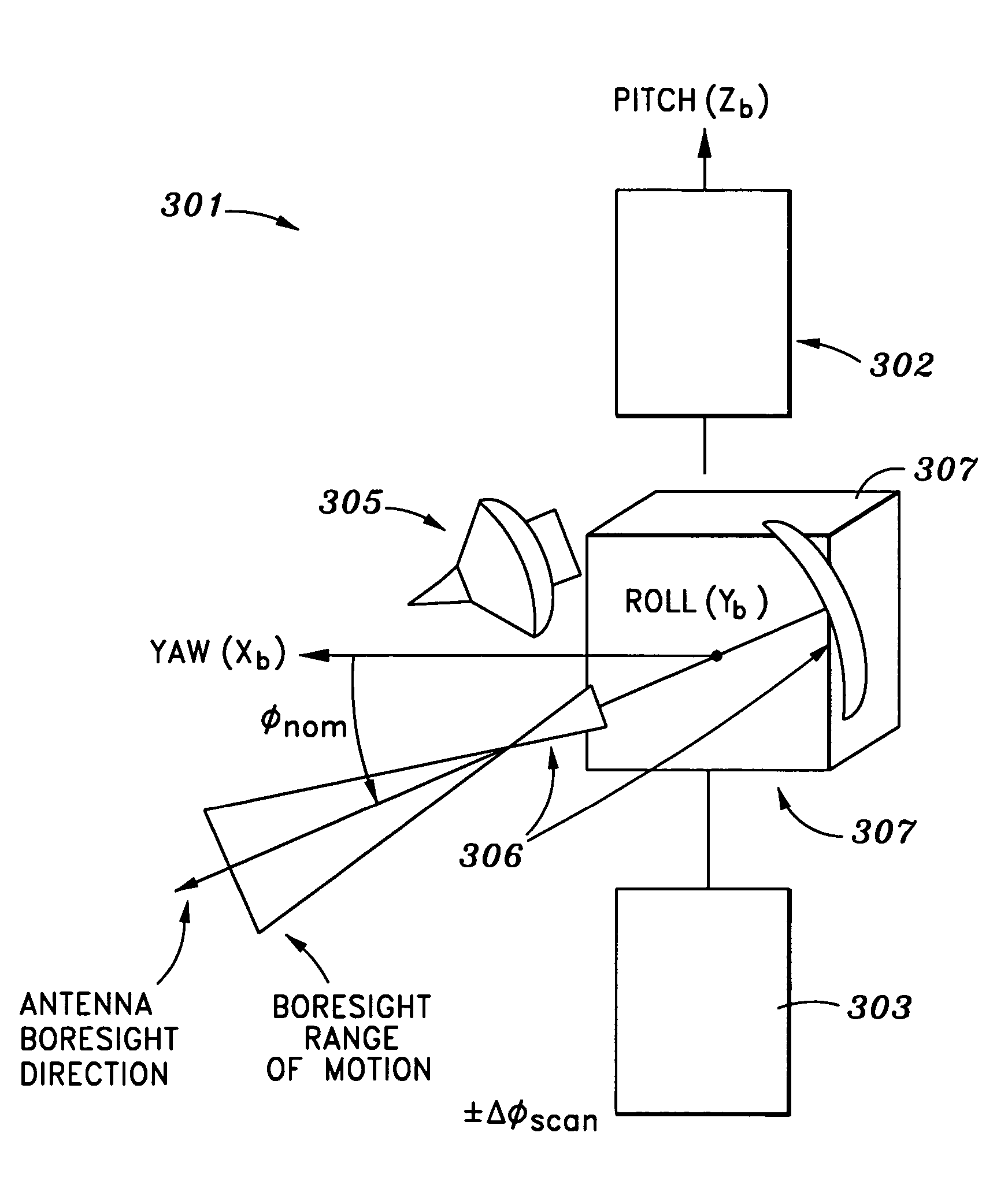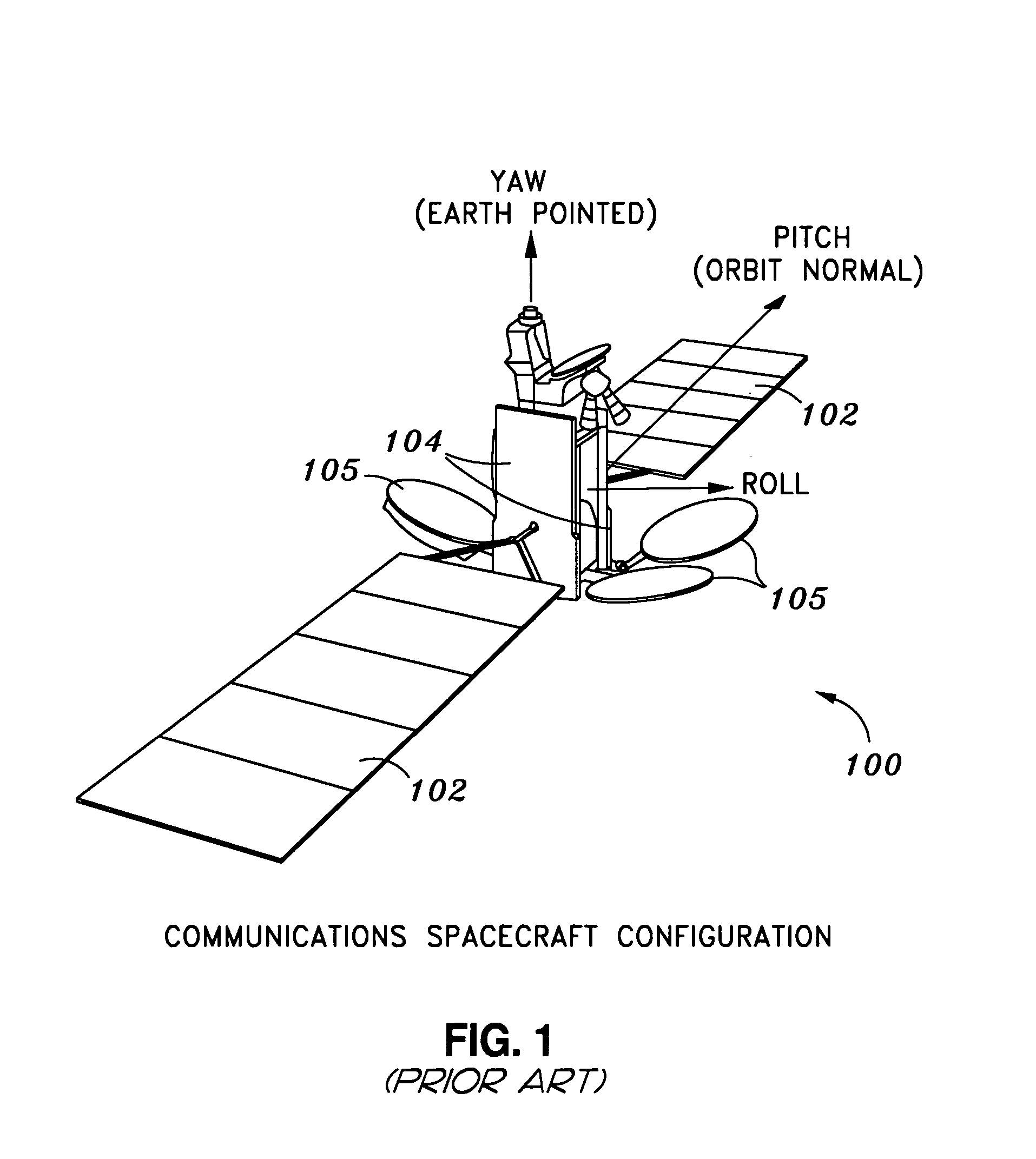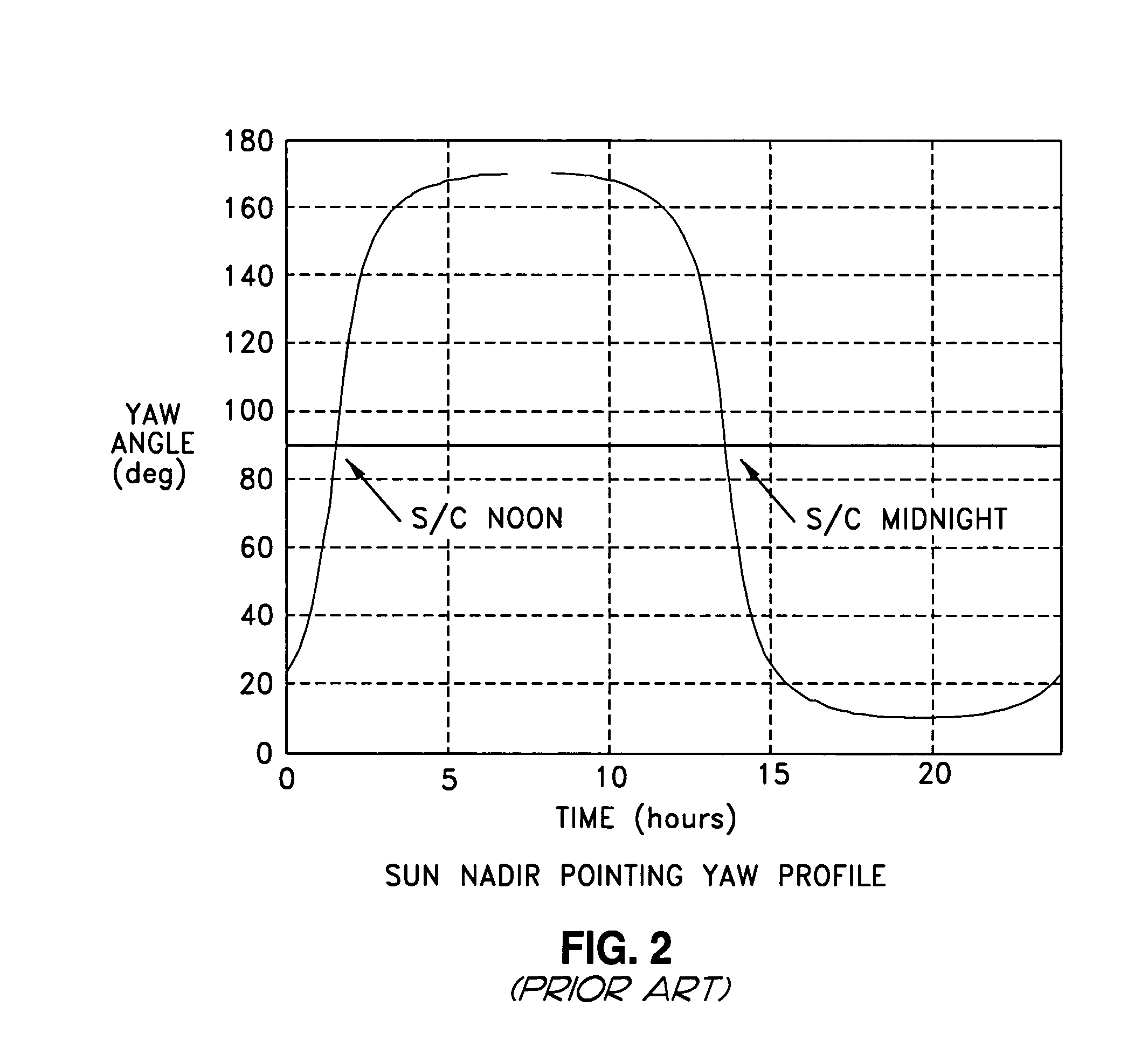Optimized land mobile satellite configuration and steering method
a satellite configuration and satellite technology, applied in the direction of navigation instruments instruments for comonautical navigation, etc., can solve the problems of limiting the payload that a spacecraft can carry, reducing the ability of the spacecraft to reject waste heat, and reducing the power produced by the solar array, so as to improve the sun geometry for power generation and thermal control
- Summary
- Abstract
- Description
- Claims
- Application Information
AI Technical Summary
Benefits of technology
Problems solved by technology
Method used
Image
Examples
Embodiment Construction
[0030] The present invention provides an LMSS for North American coverage, which overcomes the deficiencies of conventional MSS systems. Specifically, the present invention provides an enhanced LMSS using an optimized land mobile satellite configuration and steering method, which provides a favorable sun-spacecraft geometry compatible with current and future payload power and thermal requirements, without the need for yaw steering.
[0031]FIG. 3 is a diagram depicting the optimized spacecraft configuration according to one embodiment of the present invention. Briefly, the present invention is a method for configuring and operating a spacecraft in an orbit that is inclined with respect to Earth's equatorial plane, the spacecraft including at least a solar array, a receive antenna, a transmit antenna, and radiator panels. The method includes the step of nominally orienting the yaw axis of the spacecraft, the roll axis of the spacecraft, and the radiator panels substantially parallel to...
PUM
 Login to View More
Login to View More Abstract
Description
Claims
Application Information
 Login to View More
Login to View More - R&D
- Intellectual Property
- Life Sciences
- Materials
- Tech Scout
- Unparalleled Data Quality
- Higher Quality Content
- 60% Fewer Hallucinations
Browse by: Latest US Patents, China's latest patents, Technical Efficacy Thesaurus, Application Domain, Technology Topic, Popular Technical Reports.
© 2025 PatSnap. All rights reserved.Legal|Privacy policy|Modern Slavery Act Transparency Statement|Sitemap|About US| Contact US: help@patsnap.com



